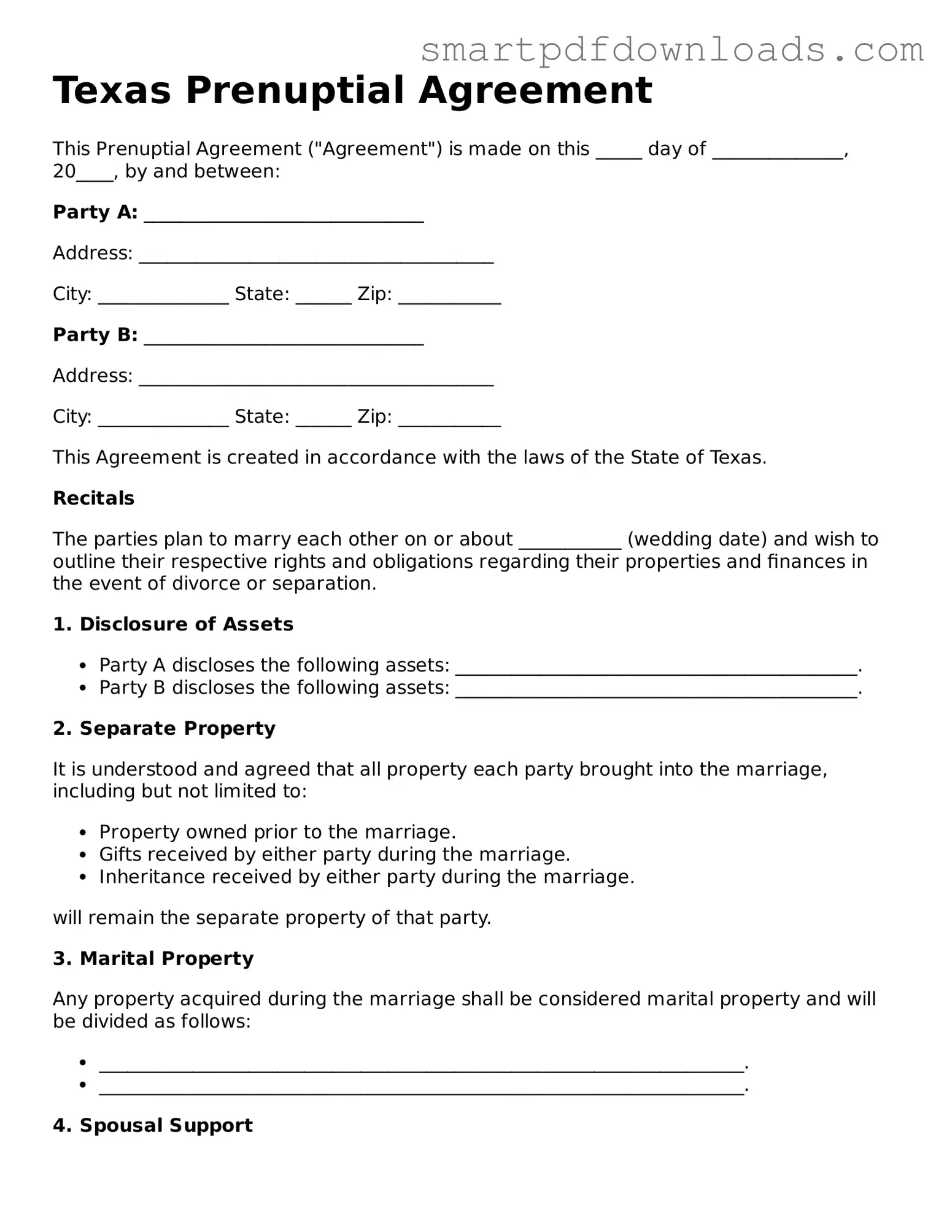Texas Prenuptial Agreement
This Prenuptial Agreement ("Agreement") is made on this _____ day of ______________, 20____, by and between:
Party A: ______________________________
Address: ______________________________________
City: ______________ State: ______ Zip: ___________
Party B: ______________________________
Address: ______________________________________
City: ______________ State: ______ Zip: ___________
This Agreement is created in accordance with the laws of the State of Texas.
Recitals
The parties plan to marry each other on or about ___________ (wedding date) and wish to outline their respective rights and obligations regarding their properties and finances in the event of divorce or separation.
1. Disclosure of Assets
- Party A discloses the following assets: ___________________________________________.
- Party B discloses the following assets: ___________________________________________.
2. Separate Property
It is understood and agreed that all property each party brought into the marriage, including but not limited to:
- Property owned prior to the marriage.
- Gifts received by either party during the marriage.
- Inheritance received by either party during the marriage.
will remain the separate property of that party.
3. Marital Property
Any property acquired during the marriage shall be considered marital property and will be divided as follows:
- _____________________________________________________________________.
- _____________________________________________________________________.
4. Spousal Support
The parties agree that in the event of divorce, spousal support shall be addressed as follows:
- _____________________________________________________________________.
- _____________________________________________________________________.
5. Governing Law
This Agreement shall be governed by and construed in accordance with the laws of the State of Texas.
6. Amendment and Revocation
This Agreement may only be amended or revoked by a written document signed by both parties.
7. Entire Agreement
This document constitutes the entire understanding between the parties regarding the subject matter herein and supersedes all prior negotiations and agreements.
IN WITNESS WHEREOF, the parties have executed this Prenuptial Agreement as of the date first written above.
Party A Signature: ______________________________ Date: ___________
Party B Signature: ______________________________ Date: ___________
